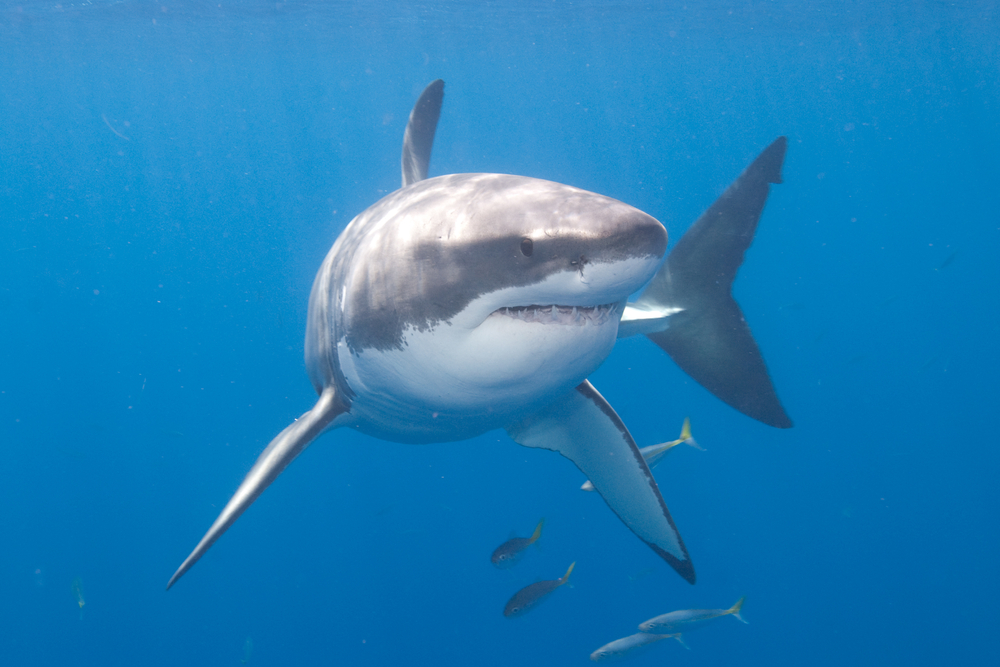Fishermen encounter a great white shark off Oahu (and it could happen more often)
Kayak fishermen Isaac Brumaghim and Bobby Fernandez were out in the waters off Kaena Point last week Friday, spending the day getting seafood to stock a wedding and a baby showers for the upcoming weekend.
And that’s when they encountered what turned out to be a great white shark.
“I just paddled over to Bobby, he had caught some fish off the ledge and he was about to show me one of his tunas when the great white shark came smashing out of the water under his kayak and breached right into the bottom of his kayak,” said Brumaghim.
‘It just blasted me from the bottom of my boat. Didn’t really know how to take it,” said Fernandez.
The pair was startled, but then got into action to protect themselves.
“Eventually I realized that we needed to get close together to appear bigger than it, and at last make it think about coming back after us,” he said.
“Those guys were fishing. they may have had some fish in their kayaks, and that shark could smell the blood and was checking them out,” said Dr. Michael Domeier of the Marine Conservation Institute on the Big Island.
The institute’s research shows that far more great whites make the 2,400-mile journey from the California coast to Hawaii than originally thought. Researchers have been tagging them — and tracking them. That includes a female that researchers have nicknamed Murphy Jean. Domeier said Murphy Jean has been off the Kohala coast of the Big Island for some time, and is now swimming toward Maui.
“Yes, we would be having more here,” said Domeier. “I think also some of it is just opportunistic and luck that people are seeing them. Of course, that dead sperm whale was just a significant attractant.”
But dead sperm whales — like the one that repeatedly washed up on Oahu in January — aren’t enough to explain why the great whites are visiting Hawaii waters. That’s still a mystery.
However, it’s a fact that there are more great whites worldwide.
“When I started studying them 20 years ago, it was all about what could he learn about them to protect them,” said Domeier. “Now, the message is very different. The populations are booming back, and now it’s what can we do to co-exist with them.”
“The ocean is going to have things like that in it so you can’t make it change your lifestyle forever,” said Brumaghim, a longtime kayak fisherman who’s had shark encounters in the past. “We are just a little more cautious about going out alone.”

